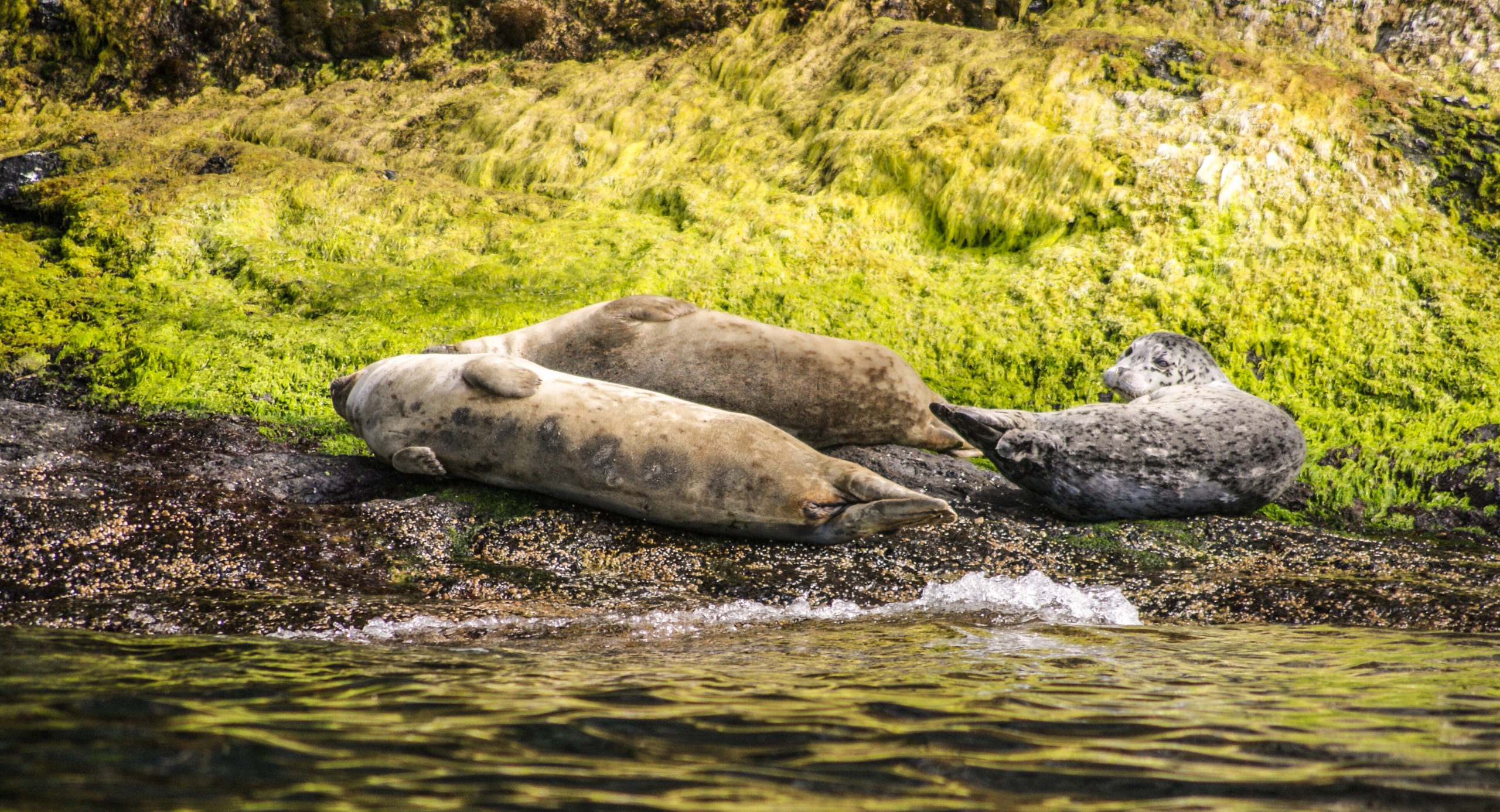I’ve teamed up with Karli Sinclair again, she’s the National Park Ranger who wrote the feature – 10 Park Ranger Tips: Visiting America’s National Parks. This time Karli is sharing her wealth of information on coexisting with native wildlife. For three years she worked at Carolina Wildlife Center, a rehabilitation clinic for native animals in Columbia, South Carolina. From that experience she learned countless tips to help care for wildlife in need.
Our WILD Neighbors: Protecting Native Wildlife
As the seasons change in the American southeast, and springtime brings more showers and warmer weather, native wildlife start becoming more active. This change means animals are starting to venture out of their winter homes to begin finding mates, building nests, and raising babies. During this seasonal shift in behavior there are practices you can exercise and keep all year round to help protect native wildlife. Use this article as a guide to help you learn more about the habits of wildlife and how you can help them thrive – all while respecting them at the same time!


This little bunny was caught by a cat and taken away from its mother and siblings. After being found this baby was brought to Carolina Wildlife Center to receive care for its injuries. © Carolina Wildlife Center 

An x-ray of a pelican who was brought to Carolina Wildlife Center for a broken wing, upon further inspection it was discovered that he had swallowed a fishing line and hook. Thankfully he was able to have surgery to remove the hook and line. © Carolina Wildlife Center
Helping Protect Native BABY Wildlife
Noticing more babies in your backyard? Remember that every animal family is different, and they take care of their young in very different ways. For example, mama rabbits and deer leave their littles ones alone during the day and come back to protect them at night. While opossum mothers can carry up to 20 babies in their pouch and then on their backs until they are ready to venture out alone. Bird and squirrel mamas will build nests and take care of their little ones until they are mature enough to live on their own. Because of all these differences, you might find what appears to be abandoned baby animals. But often this is far from the case!
What can you do to protect native baby wildlife? Always remember that a baby’s best chance of survival is with its parents in the wild. Please DO NOT try and take care of the baby! If you think a baby animal might be sick or injured, contact a local wildlife rehabilitator. Always contact a professional first before handling or moving any wildlife. Your local wildlife rehabilitator can help you assess the situation and guide you in what to do next. More often than not they will have you simply observe the baby and wait for their parents to return. Remember, if you do bring an animal to your local wildlife center please consider bringing a donation of funds or supplies the center needs. Most wildlife rehabilitation centers are entirely self-funded by donations, so they need your support!
You can find a licensed wildlife rehabilitator here: State-by-State Listing of Wildlife Rehabilitators
Regional Licensed Wildlife Rehabilitation Centers in the Southeastern United States:
- South Carolina: Carolina Wildlife Center, The Center for Birds of Prey
- North Carolina: Carolina Waterfowl Rescue, Native Wildlife Rehabilitation Center
- Georgia: Savannah Wildlife Rescue Center
- Virginia: Wildlife Center of Virginia, Blue Ridge Wildlife Center
- Tennessee: Appalachian Bear Rescue
Helping Protect Native Birds
One of the biggest threats to native songbirds is predation from pet cats. Domestic cats are skilled predators and are very good at finding birds in your yard. Each year pet cats kill well over ONE BILLION songbirds…. You can help by keeping your cats indoors or in screen porches.
Litter is another threat to native birds, especially with trash found along roadways. Items like fast food bags or food scraps attract small animals like rodents who feed off the litter. When small mammals are near roads they are often struck, leaving behind roadkill which then attracts predatory birds like crows, hawks, vultures, owls, and even eagles. As these birds are hunting by roads, sometimes they are in mid-flight and cannot move away from speeding cars in time before being struck themselves.
What can you do to protect native birds? Easiest practice is to NOT litter and help pick-up and keep roads clean. Slow down and give wildlife plenty of space to cross roads or fly off before driving by.
Another threatening piece of litter often left behind, fishing gear. This discarded plastic trash can cause serious issues for wildlife. Birds and other native wildlife can swallow hooks and easily get tangled in fishing line.
What can you do to protect native wildlife? Clean up after yourself! Educate your friends and family members who might fish to do the same and help clean up our waterways.


Helping Keep Native Wildlife WILD
Refrain from feeding wild animals and NEVER keep them as pets. Feeding wildlife can hurt their health and make them dependent on humans. Human food is not healthy for wildlife and can often cause serious health issues. Be responsible and know the difference between providing bird food in the feeder and tossing alligators marshmallows. Animals accustomed to people often lose their fear of developed areas and can become aggressive. Those that become too aggressive may have to be euthanized to protect people. In most cases it is illegal to feed or keep wildlife, you can be fined and even serve jail time.
What can you do to help keep wildlife WILD? The best way to appreciate wildlife is from a safe and respectful distance. Instead of getting too close, you can use a camera zoom or binoculars to get a better look at animals! Also, if you know of an animal being illegally kept as a pet or fed, please report it to the proper authorities. If you are on public lands and you see someone feeding or acting inappropriately, report it to the rangers and take pictures and videos so the rangers can identify the individual and the animal.


Sticky traps can often catch animals that were not even considered the “problem” animal. Please use traps that don’t harm our wildlife, sticky traps not only catch unwanted guest but also kill the animal by starvation. This black rat snake was brought to Carolina Wildlife Center and they were able to remove it from the trap and release the snake back into the wild. © Carolina Wildlife Center 

Often fishing lines are left behind in and around our waterways. This discarded plastic trash can cause serious issues for wildlife. Birds and other native wildlife can swallow hooks and easily get tangled in fishing line.
Spring Cleaning with Native Wildlife in Mind
Spring cleaning is something we all like to do! It is the perfect time to recycle and donate items we have kept through the winter. During this deep clean we might find traces of animal friends that have moved into your homes or garages to keep warm through the winter. They may even be building nests to prepare for incoming babies. Of course, no one likes uninvited house guests, but we have to keep in mind that these animals are just trying to survive. They are not trying to harm or bother you.
What can you do to help protect native wildlife when cleaning? When these wild guests show up, some people like to use snap or glue traps to catch them, these traps are very cruel and inhumane and often catch other animals unintentionally. When removing unwanted house guests please use live traps instead. These traps are reusable, easy to set, and they won’t harm our animal friends. If you have a true infestation, consider contacting an ethical wildlife removal team that relocates and does not kill our local wildlife.


Sadly, human development has divided the land to make roadways faster for us. This leaves turtles to fend for themselves as they cross busy roadways to find a safe nesting place. Often crossings are only a one-way trip as so many turtles are struck by traffic. 

If it is safe for you, pull over, and help the turtle cross the road. Make sure to take the turtle in the direction they are headed. Do NOT relocate turtles or redirect them. Doing so does NOT help, turtles have very strong navigation skills, and this extra movement can put them in even more danger as they try to return to their original route.
Helping Protect Native Turtles
Springtime means egg laying time! Warmer weather cues turtles to come out of their winter dormancy period. And female turtles are looking for somewhere to lay their eggs. Sadly, human development has divided the land to make roadways faster for us. This leaves turtles to fend for themselves as they cross busy roadways to find a safe nesting place. Often crossings are only a one-way trip as so many turtles are struck by traffic.
What can you do to protect native turtles? See a turtle on or near the road? If it is safe for you, pull over, and help the turtle cross the road. Make sure to take the turtle in the direction they are headed. Do NOT relocate turtles or redirect them. Doing so does NOT help, turtles have very strong navigation skills, and this extra movement can put them in even more danger as they try to return to their original route.
Our WILD Neighbors: Helping Protect Native Wildlife
Thank you for caring about native wildlife neighbors right in your own backyards.
Our hope is this article can be used as a guide to help you learn more about the habits of wildlife and how you can help them thrive!



























